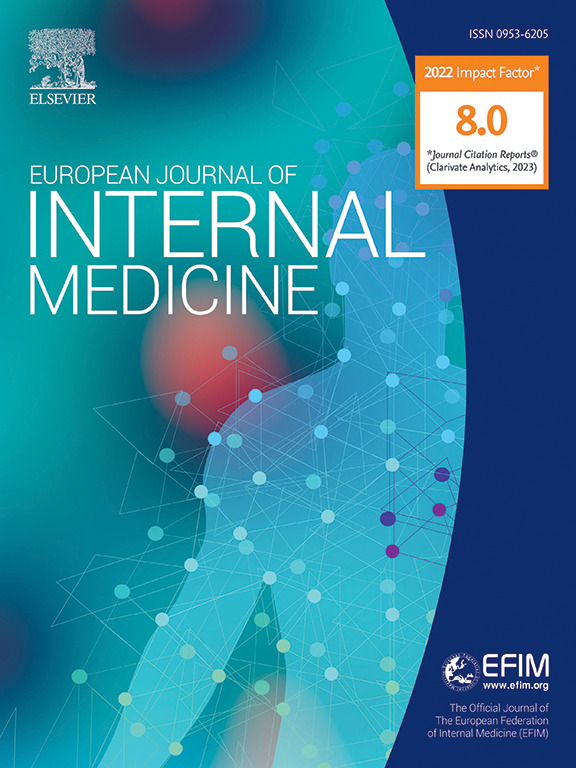老年高血压心脏病:临床实践的考虑。
IF 6.1
2区 医学
Q1 MEDICINE, GENERAL & INTERNAL
引用次数: 0
摘要
对患有高血压的老年人进行适当的管理对于减轻高血压性心脏病的负担和进一步的心血管后遗症至关重要,但由于同时存在衰老变化、合并症和功能障碍,可能会面临一些挑战。建议定期评估虚弱程度和功能状态,以了解患者的需求并指导治疗决策。应根据标准指南使用合适的袖带测量诊室血压。应高度怀疑老年人常见的直立性低血压和白大衣/假性高血压。心脏成像通常能发现与年龄有关的变化,而这些变化可能并非单纯由高血压引起,包括心室容积变小、乙状隔和非缺血性纤维化。舒张功能障碍很常见,在出现红色信号时可能需要考虑其他病变,包括心脏淀粉样变性。建议在血压评估期间筛查心房颤动。血压管理的决定应遵循当前的建议,并考虑患者的年龄和耐受性。有关老年患者心力衰竭治疗的证据有限,但应根据指南进行疾病修饰治疗。目前尚缺乏针对这一患者群体的充分的疗效数据,因此通常需要采用多学科方法来设计最佳治疗方案。本文章由计算机程序翻译,如有差异,请以英文原文为准。
Hypertensive heart disease in older patients: considerations for clinical practice
Appropriate management of older people with hypertension is essential to reduce the burden of hypertensive heart disease and further cardiovascular sequelae but there may be challenges given the presence of concurrent senescent changes, comorbidities and impairment in functionality. It is recommended that frailty level and functional status are assessed periodically to understand patient needs and to guide treatment decisions. Office blood pressure should be measured with an appropriate cuff as per standard guidelines. There should be a high index of suspicion for orthostatic hypotension and white coat/masked hypertension, both common in older individuals. Cardiac imaging often identifies age-related changes that may not result from hypertension alone, including smaller ventricular volumes, a sigmoid septum and non-ischaemic fibrosis. Diastolic dysfunction is common and other pathologies, including cardiac amyloidosis, may need to be considered in the presence of red flags. Screening for atrial fibrillation during blood pressure evaluation is advised. Decisions for blood pressure management should follow current recommendations and take into consideration the patient's age and tolerance. There is limited evidence regarding heart failure management in older patients, however, disease-modifying therapy as per guidelines should be pursued. Sufficient outcome data are lacking for this patient group and a multidisciplinary approach is often needed to design optimal therapy.
求助全文
通过发布文献求助,成功后即可免费获取论文全文。
去求助
来源期刊
CiteScore
9.60
自引率
6.20%
发文量
364
审稿时长
20 days
期刊介绍:
The European Journal of Internal Medicine serves as the official journal of the European Federation of Internal Medicine and is the primary scientific reference for European academic and non-academic internists. It is dedicated to advancing science and practice in internal medicine across Europe. The journal publishes original articles, editorials, reviews, internal medicine flashcards, and other relevant information in the field. Both translational medicine and clinical studies are emphasized. EJIM aspires to be a leading platform for excellent clinical studies, with a focus on enhancing the quality of healthcare in European hospitals.

 求助内容:
求助内容: 应助结果提醒方式:
应助结果提醒方式:


